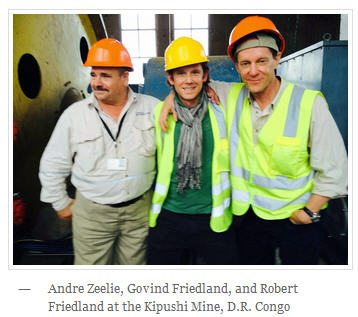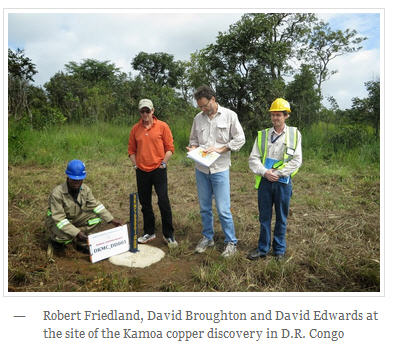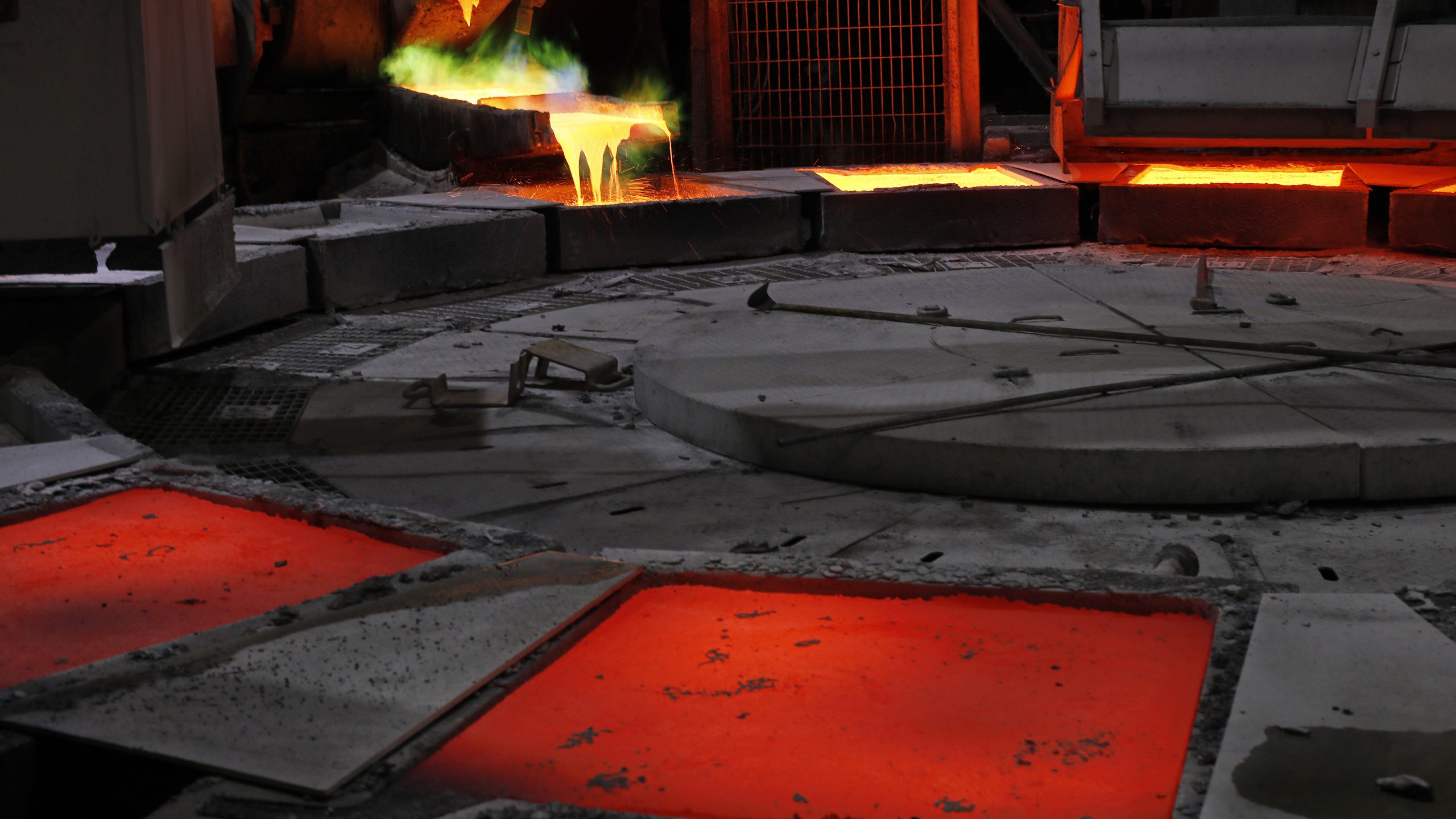On an African dog and pony show with mining mogul Robert Friedland
The reality distortion field made famous by Steve Jobs’ biographer Walter Isaacson, is a personal intensity and vision so powerful it bends people to your will, convincing them of a project’s higher purpose. Isaacson describes this capacity for influence as a notorious trait of Steve Jobs, who, as founder and CEO of Apple, managed to ship mountainous innovation that consistently redefined the relationship between art and technology.
An interesting footnote here is the fact that Robert Friedland, one of the world’s most successful global resource developers, taught Jobs about the reality distortion field when Jobs was a college student in 1972. And he’s used it to promote a ton of successful mining ventures over the past 35 years—he’s found and developed them on nearly every corner of the globe. And became a multi-billionaire in the process.
I was actually on a trip with Friedland last week, touring three of his latest mining projects in South Africa and the Democratic Republic of Congo (DRC). I didn’t realize how privileged I was to be included in the crew, which consisted of members of Friedland’s family and a few investors, until on his Gulfstream jet on the way there, his 39-year-old geologist son Govind looked at me puzzled, then joked to his dad, “What is a blogger doing here?”
A good question. Friedland has for decades been reclusive—even combative toward the media.
“I’ve been emailing your dad every two weeks for two years telling him that I look forward to joining him on a site visit in the near future, and that it’s going to be great!” I quipped.
“Aha,” said Govind, “The reality distortion field.”
The truth was that Friedland was headed to Africa to keynote the 2014 Mining Indaba in Cape Town—considered the biggest mining investment convention in the world—and had, finally, let me tag along.
In Cape Town, Friedland told an audience of over a thousand high-level investors and government bureaucrats that Ivanhoe Mines’ has three world-scale mineral discoveries coming soon, “to a theatre near you.”
We flew from the conference to Limpopo province in northern South Africa, where Friedland’s company spent nearly 20 years looking for platinum before finding arguably the best platinum ore body ever discovered: the Platreef project.
A Japanese consortium gave Ivanhoe Mines $290 million for 10% of Platreef in 2010 and 2011. The first shaft is set to be sunk any day now, and once built, Platreef will be unlike all other platinum mines in South Africa.
Platinum production is a mess in South Africa. Sure, 73% of the world’s platinum originates there, but the average mine is a kilometer deep, where underground workers mine ore bodies just a meter thick, in blazing hot temperatures upwards of 122ºF (50ºC).
Conversely, the Platreef ore body is 24 meters thick on average—a freak of nature by platinum standards—which will allow for air-conditioned, mechanized labor. In fact, Friedland bets that most of the project’s underground workforce will be women; they are proven to be better at operating large mining machinery, he says.
While Platreef waits on its Mining Right, which is expected in the next few months, the company plans to publish a Preliminary Economic Assessment by summer. Financing for the proposed mine will likely continue to come from Japan, which needs the metal for catalytic converters and other new technologies. Social license is the project’s biggest risk, but the company has devoted substantial resources on the communication, training and jobs creation fronts. Ultimately, Friedland is hopeful the project will get built for a 2018 startup. Mining operations could last 100+ years, as the 28.5-million-plus-ounce platinum, palladium, gold and rhodium deposit remains open to the West and South.
After touring Platreef, we flew to Lubumbashi in the DRC’s Katanga province (AKA the land of copper). Katanga is lush green country with reddish brown soil. Shacks, French signage, and smiling children lined the unpaved roads on which our motorcade barrelled forward—Friedland, of course, was in VIP car #1. Not far from Lubumbashi is Ivanhoe’s Kipushi Mine, and when we finally arrived there, we were greeted by a full percussion band.
“Promoting a stock is like making a movie,” Friedland once said. “You’ve got to have stars, props, and a good script.”
The Kipushi Project is a sight to behold. With copper grades as rich as 35%, and zinc around 40%, it was the world’s richest copper and zinc mining operation for the better part of the last century. If you don’t know mining, understand: these are absurdly rich grades. Kipushi was abandoned in 1993, and flooded in 2011. During the same year, Ivanhoe bought it for $150 million from controversial Israeli businessman Dan Gertler, who was under pressure from the Congolese government to do something with it. Ivanhoe’s been dewatering the mine since; drilling is set to commence any day now from 1200 meters below surface, targeting the Big Zinc orebody, a potentially huge zinc deposit that is open at depth. It may also contain copper and precious metals.
“This is a real zinc mine,” Friedland told investors at a Kipushi technical presentation, “and if we find high-grade copper down there as well, everything is paid for.”
Five shafts are already built at Kipushi. #5 is still in excellent condition. “The heart of a mine is its main shaft,” said Andre Zeelie, Kipushi’s project manager and former Deputy Director of Mining at Oyu Tolgoi LLC.
“This shaft would cost us a billion dollars today,” remarked Friedland.
Early the next morning, we flew an hour west to Kolwezi, where Friedland’s crew had discoveredKamoa, the world’s largest undeveloped high-grade copper deposit. During the flight over, I quizzed Ivanhoe EVP of Exploration David Broughton, who, along with David Edwards, is credited with making the Kamoa discovery. Broughton explained Kamoa’s origin story: in 2004, an Ivanhoe contractor had surveyed the project, conducting soil samples and geochemistry tests that returned 500 parts per million copper. The figures weren’t nearly enough to get most explorers excited, but it was enough for Friedland to finance a drill program.
In 2008, their drill cut through high grade copper. Incredibly, under the surface with a rail line over top it, lay the first major copperbelt discovery in the DRC since the early 1900s.
“The one thing our group does is drill,” Friedland said. “We’re famous for it.”
Today, the Kamoa camp is bustling, with some 300 local workers on site. The company aims for a 2018 start-up, but needs a financial partner, such as a sovereign or major miner, to come in with the cash.
“This is a miner’s resource,” said Sam Riggall, Ivanhoe Mines head of strategy and project development. Assets like Kamoa—which might produce copper for generations—are long-term plays for the majors, hitting their sweet spot years after the beginning of operations. “The cream is over time, in the expansions,” Riggall added. “You simply cannot apply conventional DCF analysis to projects like Kamoa and expect to get a sensible answer on value.”
Friedland expects to sell part of Kamoa to the Chinese or Koreans. Requiring a smelter in Phase 2, the project is a behemoth. But Friedland told me not to worry.
“World class ore bodies finance themselves,” he said. “In fact, people fight to finance them.”
“This is the world’s richest undeveloped copper resource. Come back in 10 years and it will happen. The world moves forward.”
At the Kamoa camp, a South African mining analyst and I started talking to Friedland about his share price, which at the moment, was nearing all-time lows.
“Why do you keep pressuring me to promote the stock?” Friedland gestured to me. He turned to the analyst, “It’s your job to find investors and if you don’t, it doesn’t change my life. This is getting built. Seven billion dollars for the Oyu Tolgoi mine in Mongolia and it was a thousand times tougher.”
Ivanhoe Mines’ shares are so cheap, in fact, that the $2.9-billion implied valuation the Japanese placed on the Platreef project is more than three times higher than the market valuation of the entire company today. In effect, this means Ivanhoe investors get Platreef at a huge discount, along with Friedland, the team, Kamoa, and Kipushi, for free.
On our final day of the trip, I sat at an analysts’ table during lunch and watched a heated debate over the company’s share price. One analyst was extremely negative. Others were more subdued. The consensus was that investors today are avoiding companies that will need more money and Ivanhoe undoubtedly will have to raise more cash to continue developing Platreef, Kamoa and Kipushi. This is why any investor considering the company should buy on a schedule, and be prepared to average down or participate in future financings by the company.
I’d already bought Ivanhoe Mines five times before touring the site. I’ve come to terms with the fact that I may have to do the same several more times in the coming years. But I’m reminded the sector is deeply out of favor, and I’m convinced it’s the right speculation for any investor wanting a call on Africa, platinum, copper, zinc, and a winning management.
Since I returned from Africa, everybody’s been asking me what Robert Friedland’s like in person.
The 63 year old Chicago born, Singapore based financier radiates intensity. He thrives in front of an audience. It always seems like he’s in a hurry, and his staff know better than to make him wait. Despite his age and lean frame, he is intimidating physically, and has piercing blue eyes. He has been married to Darlene, who was with us in Africa, for 33 years.
At the same time, he’s funny, sometimes goofy. He wears his hat backwards, uttering, “Be cool, be cool.” He makes a Japanese-style bow as he leaves the room.
On the long ride back to Vancouver from South Africa, I re-read Jacquie McNish’s book about Friedland, The Big Score. The first time I had read it, I was inspired to join the natural resources sector. But after spending time with Friedland, I realized the book fell short in its characterization of him. McNish paints a simple portrait of Friedland as a cunning stock promoter. I found him to be technically very astute on geology, and geopolitics, and more reluctant on the promotional front than I expected.
Friedland has attracted an impressive team at Ivanhoe. Manning the helm of every project seems to be a leader with a long track record in mine building and community relations. The Ivanhoe Mines organization is surprisingly flat, and although Friedland is likely to interrupt his employees’ when they’re giving important presentations, they’re not afraid to tell him when he’s wrong.
Robert Friedland made his fortune on quick flips, but has spent the past decade building mega-projects. My opinion is that he’s become more of a mine developer than a mining promoter. Building a mine is much more difficult than selling one undeveloped. I suspect he’s up for the task, for legacy reasons.
“Robert is a complicated man,” Riggall tells me. “His only vice is that he works very hard.”
At the Kamoa camp, as we are set to depart, Friedland shakes the hands of 300 workers and takes the mic to tell the men and women working there to make it happen.
The reality distortion field is back in action. Would you bet against him?
{{ commodity.name }}
{{ post.title }}
{{ post.date }}












Comments